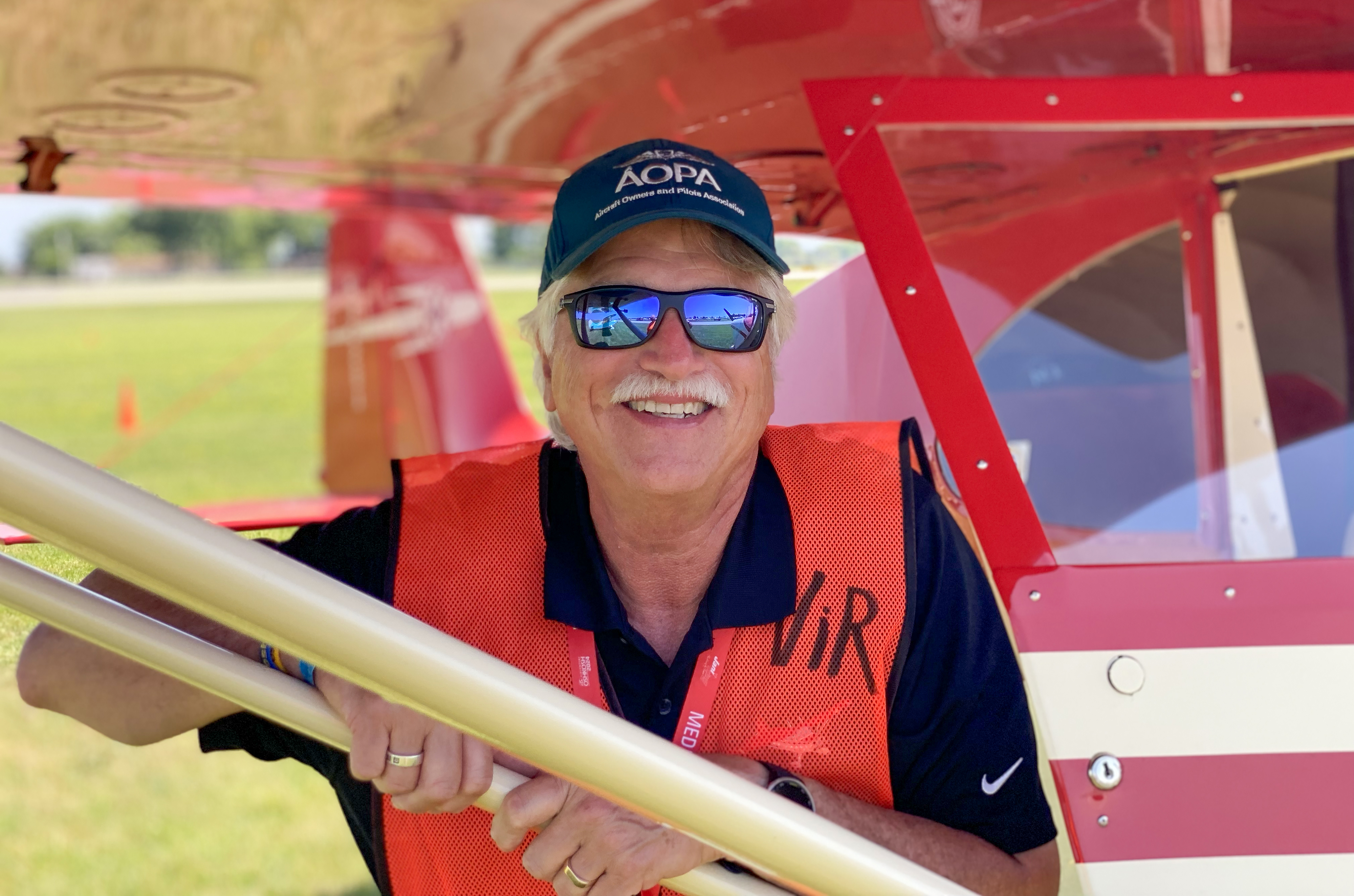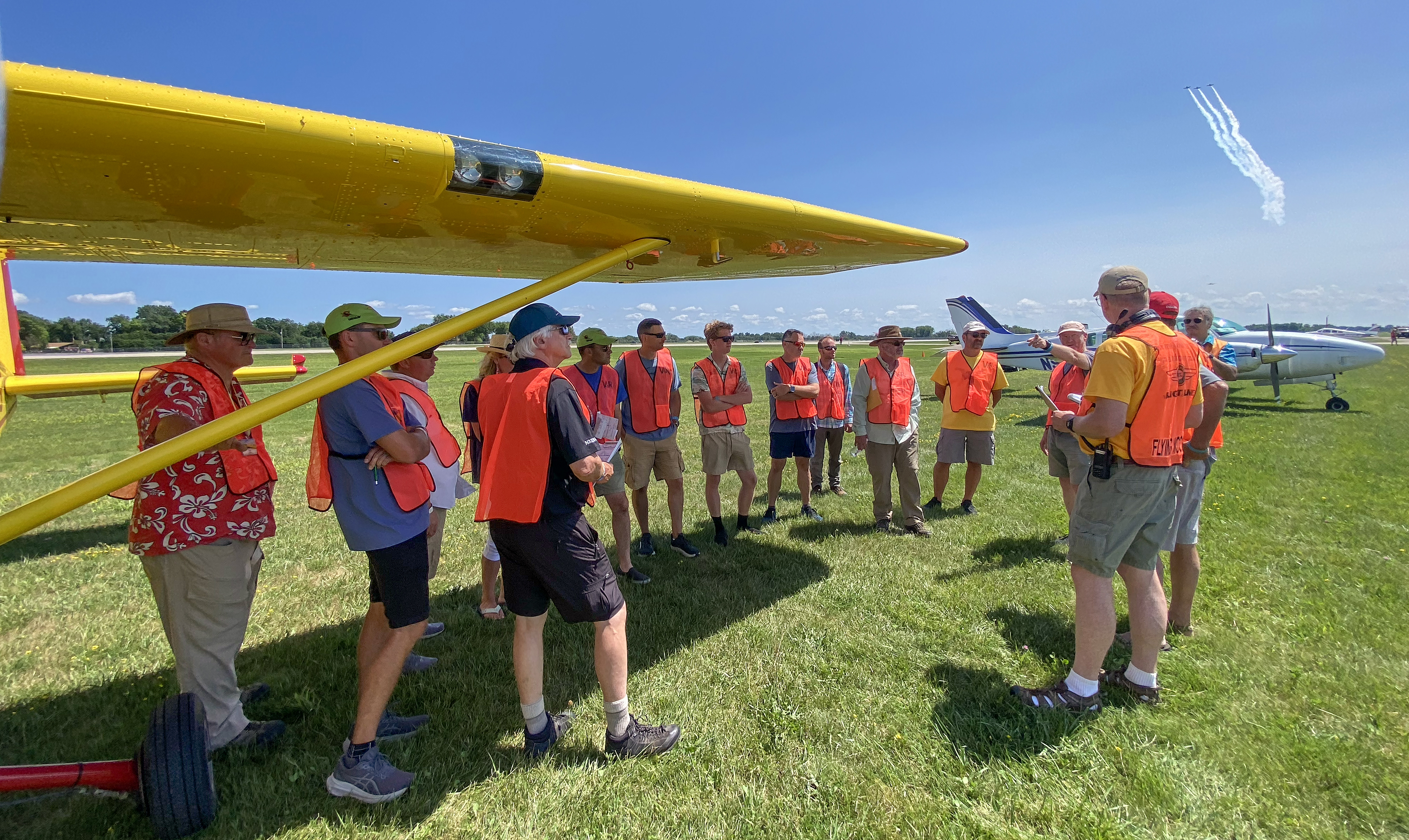Flight of fantasy
Piper Tri-Pacer pilot invited to fly EAA AirVenture airshow
I was nervous, even after poring over diagrams of the aerial parade route, attending two airshow performers’ safety briefings, and asking dozens of follow-up questions that were patiently answered by EAA AirVenture Air Bosses Kriss Kliegle and Kellie Hudson.
Flying at 500 feet and 90 knots while I crossed airshow center in my restored 1953 Piper Tri-Pacer, I could hear myself second-guessing. “How’s my airspeed? Am I flying dead-center over the grass median between Runway 36L and 36R as briefed or am I drifting right? And what about my altitude?”
All twelve of our classic aircraft were flying in a conga line spaced about 30 seconds apart. That meant simultaneous operations including takeoffs, aerial parade laps in front of the crowd, and landings, all while my vintage teammates were in other phases of the brief—but highly orchestrated flyby review.
We were the warmup act before aviation greats including Michael Goulian, Greg Koontz, Jim Peitz Skip Stewart, Philipp Steinbach, Matt Younkin, and the Red Bull Air Force took to the crystal blue sky for the Thursday afternoon airshow in Oshkosh, Wisconsin, on July 25.
With the Bellanca relocated at my 12 O’clock, the absolute splendor of flying over Wittman Regional Airport in the daily airshow finally hit me. I soaked up the spectacle of thousands of attendees looking skyward from the flightline and I silently marveled how a VFR pilot in a Piper Tri-Pacer could perform during the afternoon airshow at the world’s biggest aviation stage.
Wow!
A chance meeting months ago during the Smithsonian’s National Air and Space Museum’s Innovation in Fight event set the gears into motion. Ramp guide Kathy McGurran spotted my museum-restored cream-and-red high-wing Piper and the knot of young people crowding around its smiling nose as I lifted one little person at a time into the pilot’s seat. McGurran, an aircraft owner from Colorado, is also the EAA Vintage in Review chair. Prior to departing the ramp at Dulles International Airport where the Udvar-Hazy Center is co-located, she leaned into the cockpit and invited my airplane (and me) to the EAA AirVenture flyby. As my mom always said, “It’s not what you know, but who you know.”
It turns out that McGurran wasn’t kidding. The next morning EAA Vintage in Review flyby coordinators Jennifer Jacob and Jennifer Payne began contacting me to verify me and my airplane’s credentials. Copies of my pilot certificate, medical, flight review, and insurance were exchanged, along with history about my aircraft’s restoration for the airshow announcers.
Then it was a whirlwind of activity, procedures, and briefings leading up to the big day. As showtime arrived, the 12 of us taxied a variety of airplanes that included the Bellanca, a Stinson Reliant, Globe Swift, Piper Super Cub, Luscombe, Taylorcraft L–2 Grasshopper, Howard DGA-15, Aeronca Champion, and an Aeronca Sedan to the staging area by Taxiway Papa.


The “show lap” was over almost as quickly as it started, and I turned hard right to lineup for a landing on Runway 36R as briefed. The short-wing Tri-Pacer can drop like a stone during a power off landing approach, so I kept my pattern predictable, tight, and to the right.
Finally on the ground and taxiing to parking, my short shift in the airshow world was ending far too soon, but not without a little drama to make it even more memorable. I felt like a real performer—and a real pilot—as people waved and cheered from the flight line.
As I returned their waves, I thought, “That was the coolest thing ever. Let’s do it again!”





